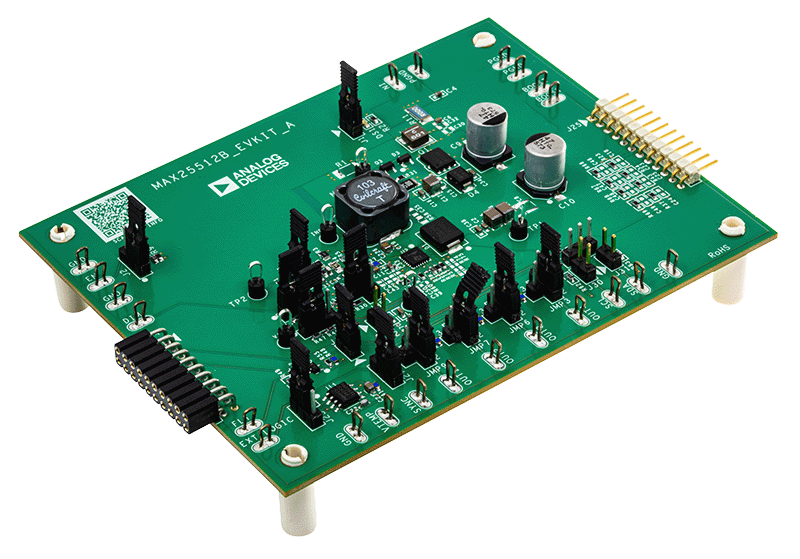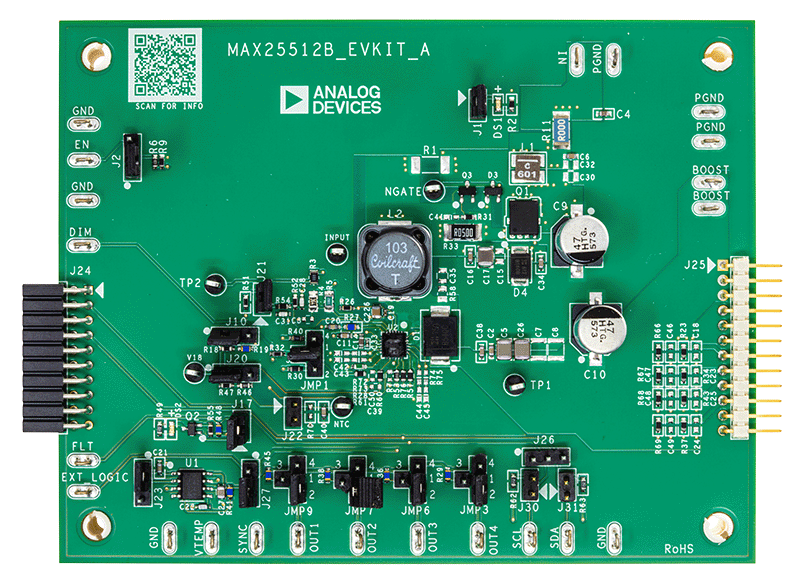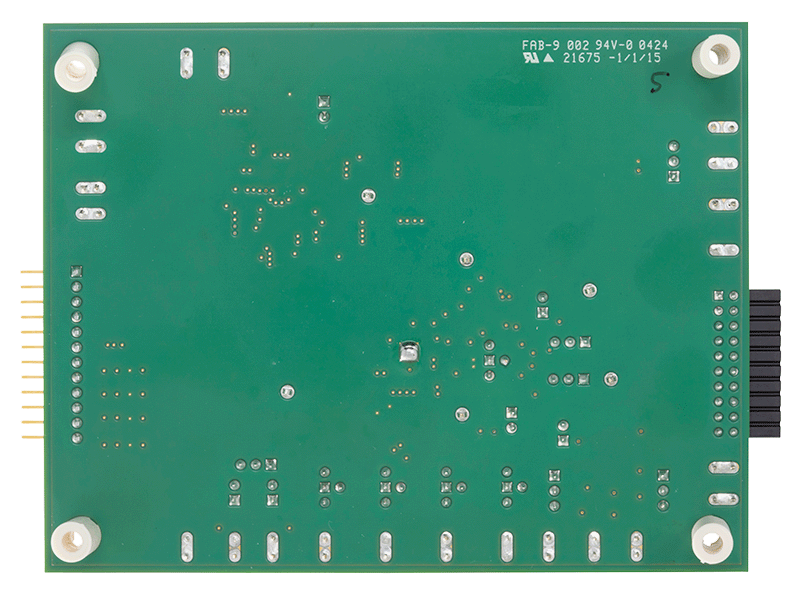MAX25512B
製造中I2C-Controlled 4-Channel Low-Voltage 120mA LED Backlight Driver with Integrated Boost Converter
- 製品モデル
- 4
- 1Ku当たりの価格
- 価格は未定
製品情報
- Operates down to 3V on Battery Input after Startup
- Wide Boost Duty Cycle to Support Low Input Voltage
- Boost or SEPIC Current-Mode DC-DC Controller
- 400kHz to 2.2MHz Operating Frequency Range
- Spread Spectrum Available
- Ability to Synchronize to an External Clock
- LED Current Sinks
- Up to 120mA Output Current per String with Fine-Adjust DAC for brightness calibration
- Low OUT_ Regulation Voltage for Best Efficiency
- Optional Phase-Shifting of Outputs
- I2C Control for Enhanced Flexibility
- 16667:1 Dimming Ratio at 200Hz
- NTC Input for LED Current Foldback at HighTemperature
- Hybrid Dimming Capable
- Built-inProgrammable Automatic Fading Functionality
- Detailed Diagnostic Using I2C and FLTB Output
- Shorted or Open LEDs
- Continuous Short-to-GND Monitoring
- Thermal Shutdown
- Output Undervoltage
- Compact, 4mm x 4mm TQFN Package
- AEC-Q100 Grade 1
The MAX25512B is a 4-channel white LED backlight driver with an integrated current-mode boost converter that operates over a switching frequency range of 400kHz to 2.2MHz and incorporates spread spectrum. Phase-shifting of the output channels is included as an option to further reduce electromagnetic interference (EMI).
The device provides up to 120mA per channel and includes a control output for an external nMOS series switch. It is capable of operating down to 3V after startup. The device is hybrid-dimming-capable and provides a brightness calibration feature through a dedicated DAC. It can benefit from these two functions simultaneously.
The MAX25512B has an I2C interface to enable flexibility of control and detailed diagnostics. The MAX25512B is available in a compact TQFN package and operates over the -40°C to +125°C temperature range.
APPLICATIONS
- Automotive Instrument Clusters
- Automotive Central Information Displays
- Automotive Head-Up Displays
ドキュメント
データシート 1
ユーザ・ガイド 1
| 製品モデル | ピン/パッケージ図 | 資料 | CADシンボル、フットプリント、および3Dモデル |
|---|---|---|---|
| MAX25512BATGA/V+ | 24-TQFN-4X4X0.75 | ||
| MAX25512BATGA/V+T | 24-TQFN-4X4X0.75 | ||
| MAX25512BATGA/VY+ | LFCSP | ||
| MAX25512BATGA/VY+T | 24-LFCSP_SS-4X4X0.75 |
これは最新改訂バージョンのデータシートです。
ソフトウェア・リソース
必要なソフトウェア/ドライバが見つかりませんか?
ドライバ/ソフトウェアをリクエストツールおよびシミュレーション
SIMPLISモデル 1
評価用キット
最新のディスカッション
MAX25512Bに関するディスカッションはまだありません。意見を投稿しますか?
EngineerZone®でディスカッションを始める


